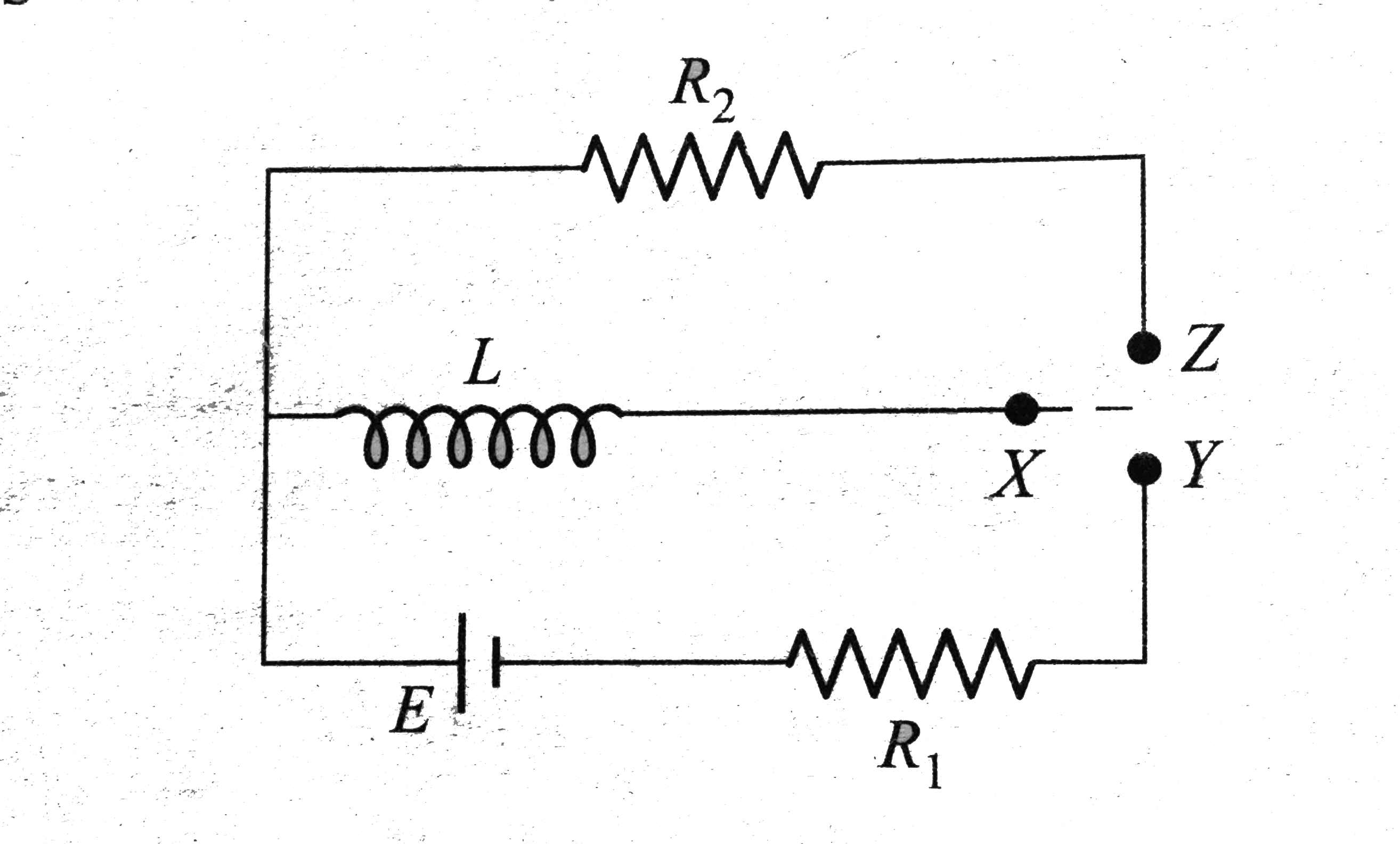The capacitor C is initially without charge. X is now joined to Y for a long time, during which H1 heat is produced in the resistance R. X is now joined to Z for a long time, during which H2 heat is produced in R

H1=H2
H1=H2/2
H1=2H2
the maximum energy stored in C at any time is H2
The correct Answer is:A
H1=12CE2
H2=12CE2
Topper's Solved these Questions
- THERMAL AND ELECTRIC EFFECT oF CURRENTBOOK - CP SINGHCHAPTER - THERMAL AND ELECTRIC EFFECT oF CURRENTEXERCISE - Exercises
101 Videos
- SEMICONDUCTORSBOOK - CP SINGHCHAPTER - SEMICONDUCTORSEXERCISE - Exercises
140 Videos
- WAVE NATURE OF LIGHTBOOK - CP SINGHCHAPTER - WAVE NATURE OF LIGHTEXERCISE - EXERCISES
140 Videos
Similar Questions
In the circuit shown, initially the switch is in position 1 for a long time. Then the switch is shifted to position 2 for a long time. Find the total heat produced in R2

View SolutionIn the circuit shown switch S is connected to position 2 for a long time and then joined to position 1. The total heat produced in resistance R1 is:

View Solution
Knowledge Check
A 4μF capacitor is charged to 400 V. If its plates are joined through a resistance of 2kΩ, then heat produced in the resistance is
A0.16 JB0.32 JC0.64 JD1.28 JIn the current shows Fig x is joined to Y for a long time and then X is joined to Z. The total heat produced in R2 is
 ALE22R21BLE22R22CLE22R1R2DLE2R22R31
ALE22R21BLE22R22CLE22R1R2DLE2R22R31A 4μF capacitor is charged to 400 V. If its plates are joined through a resistance of 4kΩ, then heat produced in the resistance will be
A0.16 JB0.32 JC0.64 JD1.28 J
A 4μF capacitor is charged to 4000 V, if the plates joined through a resistanceof 4Kω, then the heat produced in the resistance will be
View SolutionThe charge flowing through a resistance R varies with time t as Q=at−bt2. The total heat produced in R is
View SolutionIn the circuit shown the cells are ideal and of equal emfs, the capacitance of the capacitor is C and the resistance of the resistor is R. X is first joined to Yand then to Z. After a long time, the total heat produced in the resistor will be

View SolutionFind heat produced in the capacitors after long time on closing the switch S

View SolutionA 4μF condenser is charged to 400V and then its plates are joined through a resistance of 1KΩ. The heat produced in the resistance is :
View Solution
